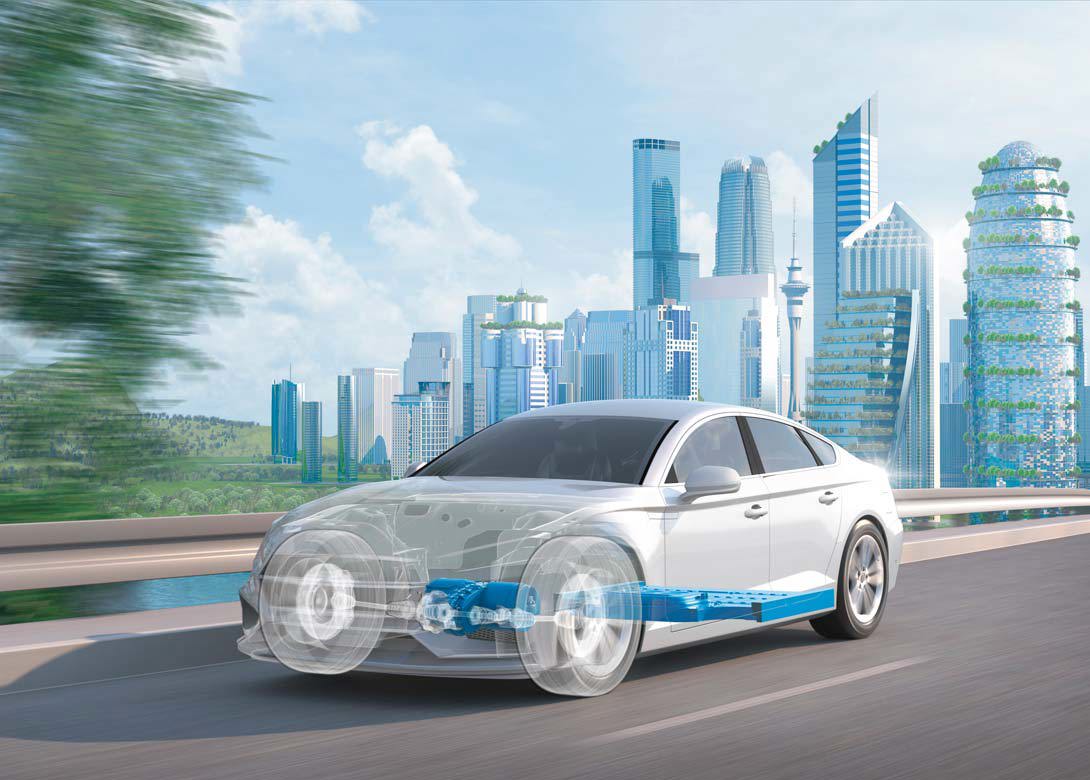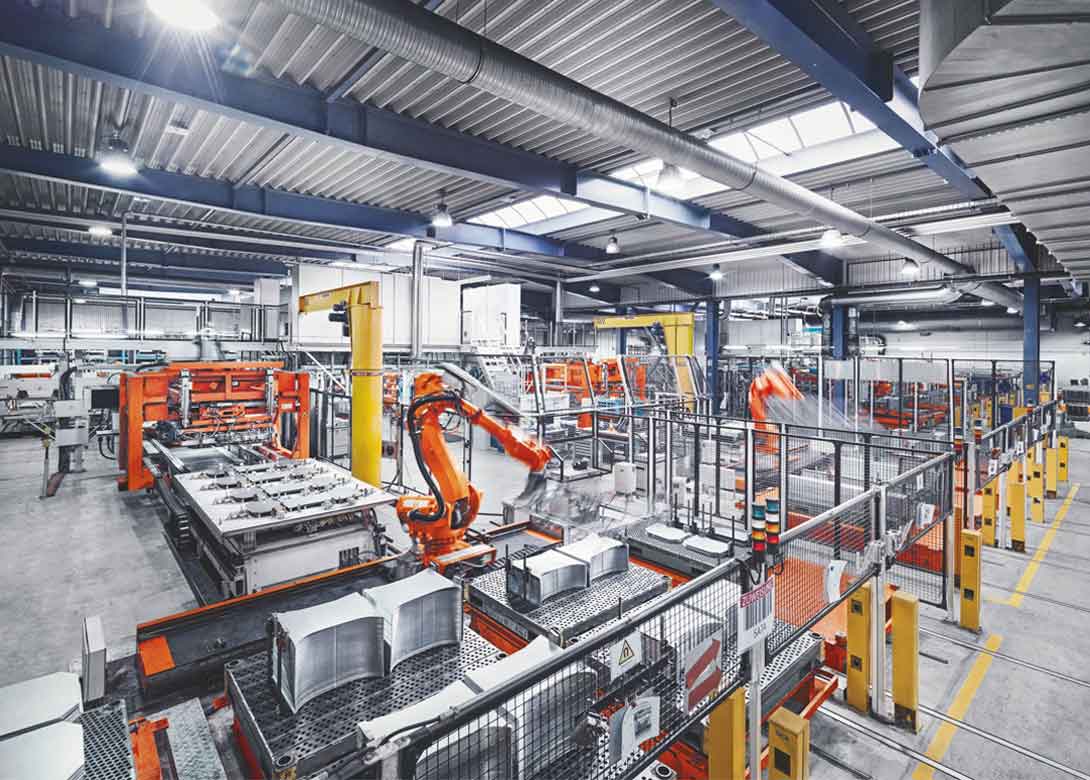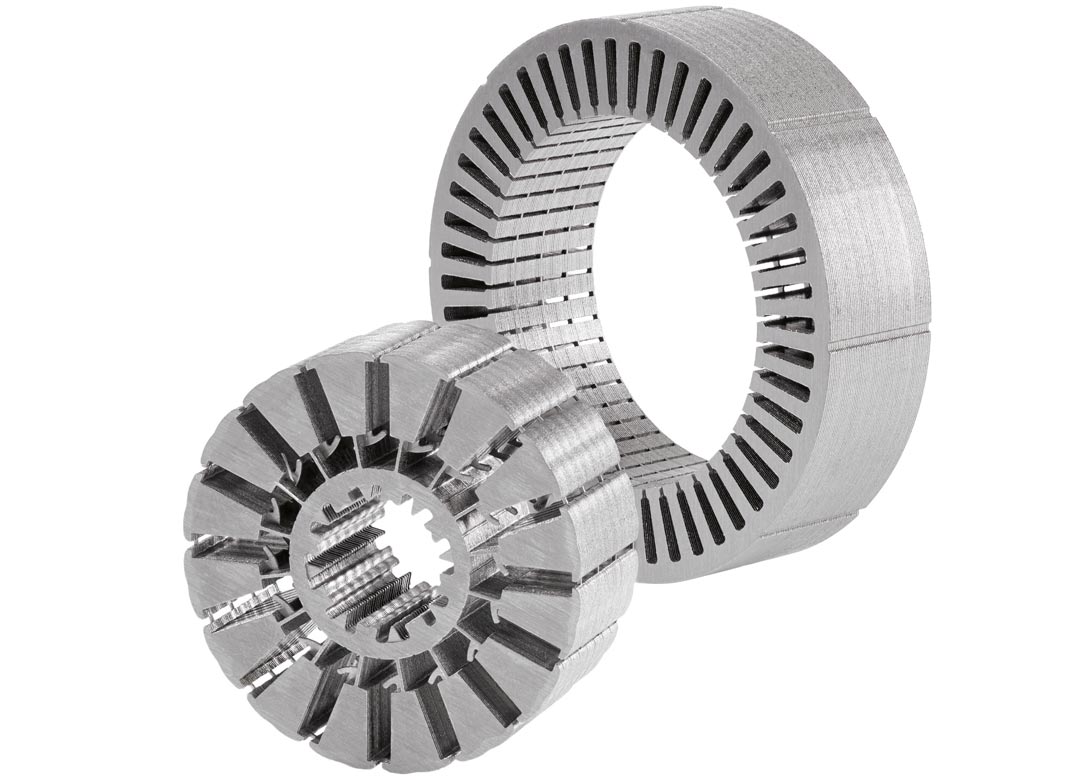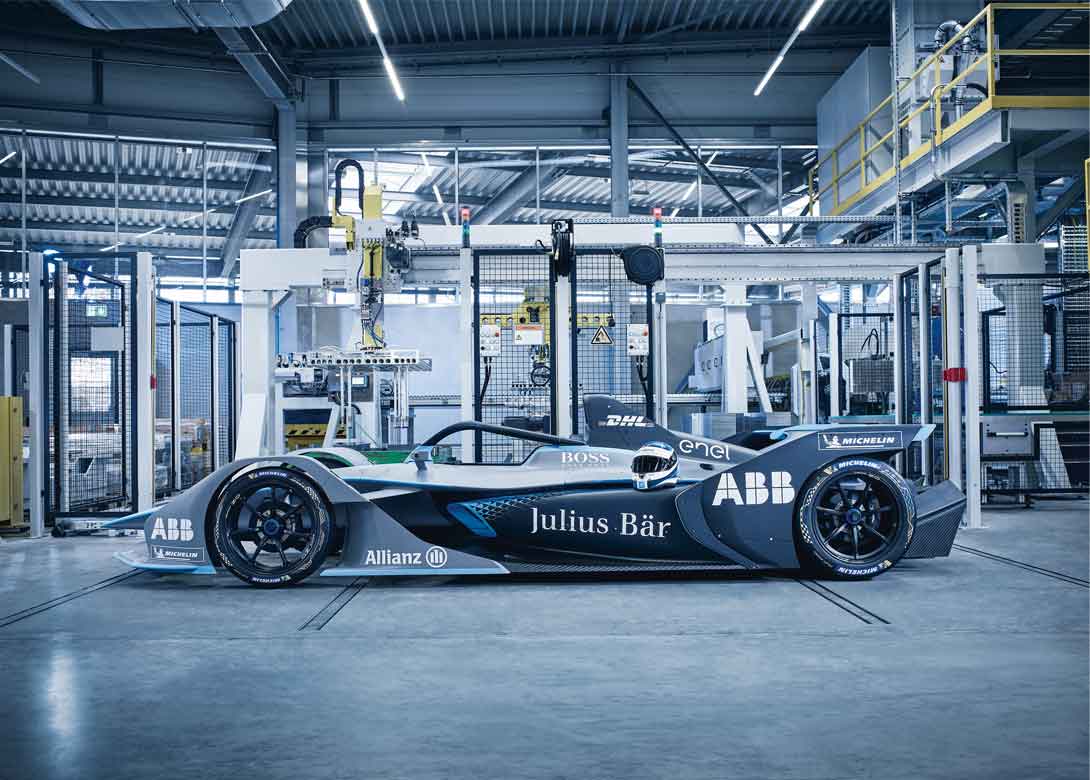
The trend towards lightweight construction has helped materials such as aluminium and plastic to become established in the automotive industry, and they will remain legitimate alternatives to steel during the shift from the combustion engine to the electric motor. Even so, in the growing global industrial sector of electromobility, demand for steel is predicted to remain high or even to increase.
This is the conclusion of a study by the German Handelsblatt Research Institute (HRI), commissioned by voestalpine. The development of innovative high and ultra high-tensile steel grades also secures the long-term future of steel in the automotive industry, because not only is the material both lightweight and tough, it is also easy to process, can be recycled, and is cost-efficient. Therefore, with its unique combination of materials expertise and processing competence, the technology group voestalpine is also excellently equipped to meet the future demands of the automotive industry, while with its comprehensive expertise it can actively help shape the future of electromobility.
Tomorrow’s electromobility will feature an ‘intelligent materials mix’ in which steel plays a crucial role. That is the conclusion of a study into the role of steel in electromobility, which was presented during the 2019 Handelsblatt Annual Conference in Düsseldorf on the future of steel. The trend in electric vehicle development of reducing weight at any price is now over. The carbon-fibre reinforced plastics, in particular, which are lighter and tougher, but also significantly more expensive than steel, appear to be losing ground in this area. The reasons behind this shift are the costs and the difficulty of recycling carbon compared to steel on the one hand, and the permanent innovations in steel toughness and weight on the other.
Share of high strength steels in vehicle construction grows to 30%
According to the study, BMW, for example, will be constructing its model i5 in steel and light alloys from 2021, rather than using carbon which dominated in the i3. Tesla, too, is reducing the share of aluminium and titanium in its model 3 in favour of steel. The European steel industry is now able to supply ultra high-tensile yet light and formable steels. They score with their ease of processing, the homogenous surface for painting, higher raw material availability, and their ability to be combined with other materials.
“The share of high strength steels amongst the steel grades used in vehicle construction will rise from its current level of 18% to 30%,” says Jan Kleibrink of the Handelsblatt Research Institute, citing preliminary work by the Posco Research Institute. According to the World Steel Association (worldsteel), this would allow vehicle weights to be reduced by between 25% and 39%, leading to potential savings of 3 tonnes to 4.5 tonnes of greenhouse gas emissions over a vehicle’s service life. Rather than disproportionately expensive weight reduction, the trend is now towards achieving a balance between weight and costs by using a mix of different steel grades with aluminium and plastic surfaces.
Irrespective of the material used, absolute priority is given to the safety of a car body in the event of an accident. That’s why, to date, a combination of aluminium and steel has been used. New steel grades have 3 to 4 times the tensile strength of conventional steels, making them particularly suitable for use in safety relevant areas, as the study shows. voestalpine is regarded as a technology leader in the production of ultra high strength yet increasingly lightweight body parts which ensure passenger safety while helping to significantly extend the electric vehicle range by reducing the overall weight.

Steel components in the electric motor and drive
The HRI study examined the choice of materials in the electric motor as well. The outcome is that steel also plays a crucial role in the motor and drive. Between 40kg and 100kg of so called non-grain-oriented electrical steel are used in the construction of a purely electric vehicle. That could increase demand for this magnetically-soft material to over a million tonnes a year in Europe alone, depending on demand. Steel manufacturers are focusing on making these electrical steels tougher and thinner in order to reduce the weight of the motor.
As the physical limits in this field have almost been reached, in future manufacturers will differentiate themselves primarily through their expertise in bonding, joining, and forming technologies. In addition, special alloys with a higher silicon and aluminium content reduce heat loss in the motor during magnetic reversal by up to 30%. Manufacturers able to demonstrate expertise in this segment will secure themselves an excellent starting position in the growing electromobility market.
Battery protection: Attractive field of activity for European steel manufacturers
Three quarters of batteries are currently manufactured in Asia, the study confirms. For European industries, this means a lack of expertise and of access to sufficiently established value chains. Not so for the housing: The battery elements need a correspondingly large container which offers sufficient protection in the event of a crash and prevent substances from leaking after an accident.
Battery casings are a new field of activity for European material manufacturers, and also for voestalpine which offers particularly lightweight and secure battery housing solutions. As the battery module as a whole can account for up to 40% of a vehicle’s weight, in addition to the safety aspects, such criteria as weight, cost-effectiveness, and sustainability are all considerations in material selections. In contrast to aluminium, titanium, and fibre composites, steel has the advantage of a superior ability to withstand distortion during accidents.
The advantages of steel for climate protection
Climate protection is the key driver of electromobility. However, if fossil fuels are used in the production of aluminium or carbon, and where the electricity in charging stations is not generated from renewables, the carbon footprint of even an electric vehicle remains completely unsatisfactory. From an ecological perspective, the success of electromobility depends on a smooth energy transition. We must not forget the impact of the materials being used; compared to aluminium or carbon, steel is particularly advantageous in this respect, requiring less energy to produce and subsequently process, and able to be eventually recycled with no loss of quality.

Electromobility is a rapidly growing market
In the EU electromobility is being promoted directly through purchasing incentives for electric vehicles, and indirectly through more stringent emissions requirements for vehicles with conventional drives, the study explains. To date the low vehicle range and comparatively high purchasing costs have deterred consumers from purchasing an electric vehicle.
“These negative factors are lessening because developments in battery technology will eliminate the range disadvantages by 2025 and allow battery costs to fall to a third of their current level,” says Kleibrink. In the current year electric vehicles could at least partly reduce their price disadvantage compared to vehicles with combustion engines. By 2025 it is estimated that over 14 million electric vehicles may well have been sold in the EU. According to the study, this is a trend in which steel as a material will play an important role: steel will dominate in an intelligent future materials mix which is designed to maximise cost efficiency, sustainability, and safety.
voestalpine in pole position for the future
voestalpine entered Formula E as a sponsor this season in order to develop electromobility further, as well as to actively encourage technology transfer between automotive suppliers, manufacturers, and customers. The fully electric race series, run in cities around the world, is the high speed development laboratory and testing ground for tomorrow’s production vehicles, making it the perfect partner to voestalpine and enabling the Group to further extend its leading position in this rapidly growing market.
The study into the role of steel in electromobility
The study into the role of steel in electromobility was undertaken by the Handelsblatt Research Institute on behalf of voestalpine. It is based on secondary analysis of 80 sources, as well as interviews with six experts. The study outlines the development of mobility from the combustion engine through to electromobility, including current backgrounds and market data.
voestalpine and Formula E
The Austrian technology group voestalpine will be a partner to the ABB FIA Formula E Championship for an initial period of two years starting from the 2018/2019 season. The company is lending its name to all the races run in Europe and presents the “voestalpine European Races”.


Having spent a decade in the fastener industry experiencing every facet – from steel mills, fastener manufacturers, wholesalers, distributors, as well as machinery builders and plating + coating companies, Claire has developed an in-depth knowledge of all things fasteners.
Alongside visiting numerous companies, exhibitions and conferences around the world, Claire has also interviewed high profile figures – focusing on key topics impacting the sector and making sure readers stay up to date with the latest developments within the industry.
Don't have an account? Sign Up
Signing up to FastFixTechnology.com enables you to manage your account details.